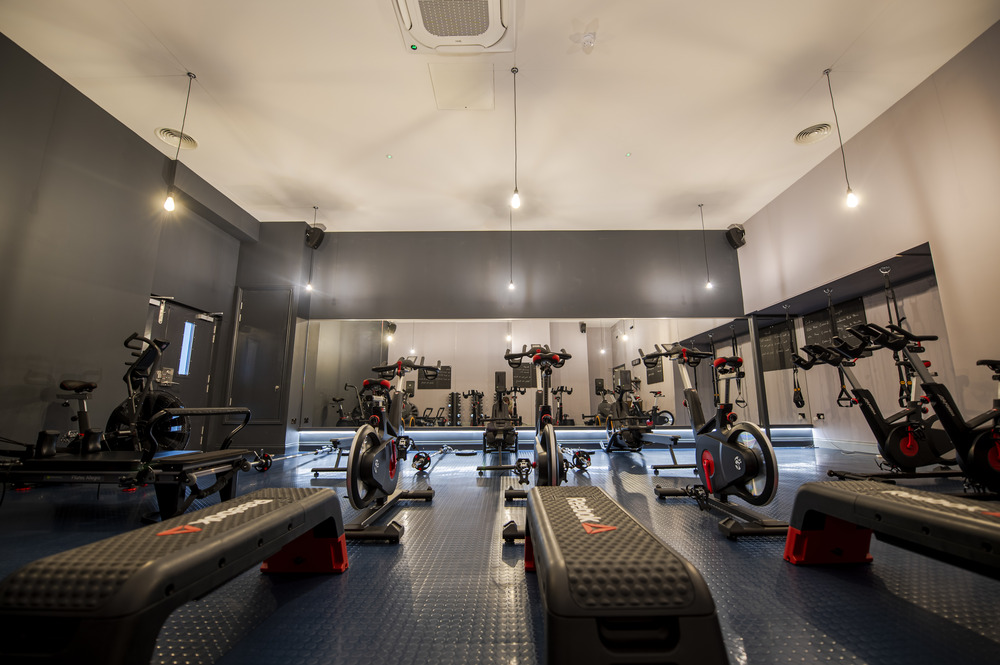High Intensity Interval Training or HIIT might sound a bit intimidating at first.
But, it doesn’t have to be as long as you take small consistent steps.
At the beginning of a new year, many people find themselves contemplating their new year’s resolutions.
Popular resolutions that often come to mind are to lose weight, exercise more, and feel good about oneself.
Finding the time to exercise, however, is often a challenge in itself, especially when considering the amount of time that our day-to-day lives can demand.
Thankfully, sports scientists and trainers have found the answer to the predicament that many find themselves in – the option to complete shorter exercise sessions at higher intensity levels with brief rest periods at intervals.
In other words, to achieve noticeable results from shorter exercise sessions.
Albeit challenging, high-intensity interval training (otherwise known as HIIT) has quickly become one of the most popular forms of exercise for any fitness level, whether a beginner or a skilled athlete.
Here are the top 5 things you need to know about HIIT.
1. What is HITT?
High-intensity interval training (HIIT) is an exercise carried out at a high effort level.
This form of training concentrates on short bursts of explosive anaerobic exercise with swift rest periods between each round of intense exercise.
The goal here is for your heart rate to rise quickly during the extreme workout, which in turn leads to a more effective oxygen-rich blood flow to your muscles.
When the heart rate elevates to 80% maximum capacity or higher, your limits and body are challenged with any high-intensity workout. Our Tempo HIIT Classes incorporate the principles of Pilates into this concept to deliver an intense workout that is low impact for the body, with a special focus on sustainability.
This form of training is suitable for any fitness enthusiast and is capable of adjusting to any specific fitness level.
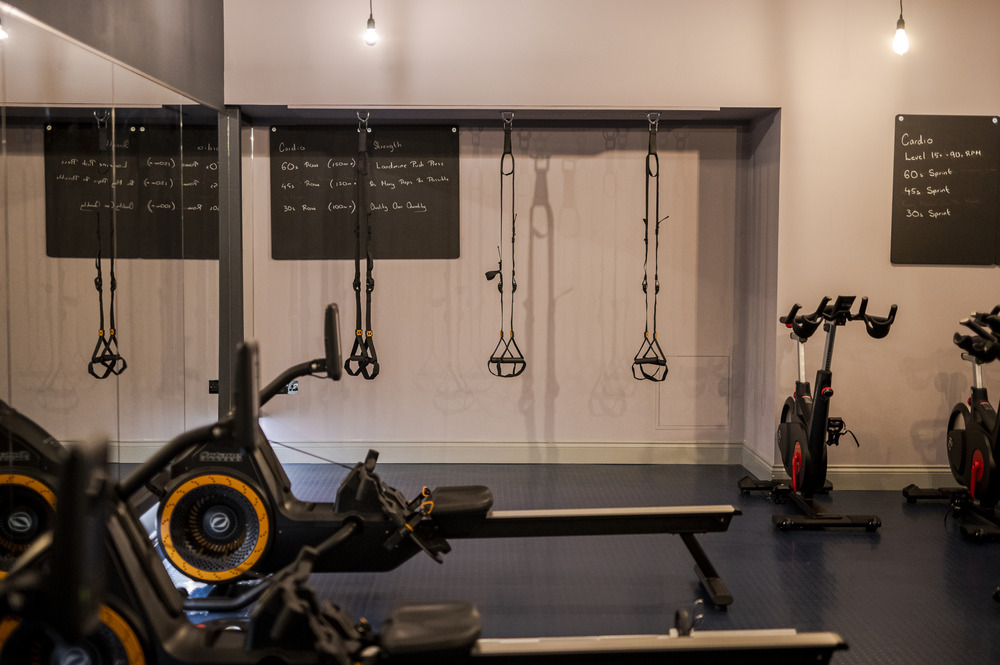
2. HIIT vs Cardio
When learning about HIIT and what the method entails, you would think that this type of exercise is on par with traditional cardio workouts such as running; however, there is a very clear difference between the two.
While both forms of exercise focus on improving and strengthening the cardiovascular system (i.e. your heart and blood vessels), whether you do a strenuous workout or exercise at a steady state, the main difference here is the training method that is utilised to achieve this goal.
Unlike traditional cardio workouts, which need to be performed for at least 30 minutes or more to reap the benefits, HIIT is short and sweet.
Let us consider the tempo at which your body is to be exerted to allow for your heart rate to increase.
The ideal capacity for a cardio workout ranges from 60-70% of maximum capacity, aiming at sustaining a heart rate of 120 to 150 beats per minute.
Therefore, to see results after a steady-state cardio workout, you will need to exercise for at least 30 minutes.
The workout capacity of HIIT, on the other hand, ranges from 80-90% of maximum capacity, sustaining a heart rate of 150 to 175 beats per minute.
HIIT includes high-intensity training from 30 seconds to 2 or 3 minutes and short rest intervals to recover before picking up where you left off.
The rest of the intervals may differ from approximately 15 seconds to 2 minutes depending on the ratio of work-to-recovery used within the workout.
While cardio workouts are the answer to following an aerobic exercise path, various methods may be adopted.
Low-intensity exercises allow your body to utilise its aerobic system, specifically the oxygen that is stored in your system, and restore it to a neutral state afterwards.
HIIT is an anaerobic exercise which means that it is a method in which your body does not need to rely on its oxygen stores to do the workout.
Instead, it uses glucose (sugars) stored in your muscles.
Cardio exercises are a slower method to burn fat because this method takes longer for your body to break down stored carbohydrates and slowly release energy for muscles to use during exercise.
Alternatively, high-intensity training ensures a fast and effective way to lose fat – your body is essentially forced to burn energy from fat (i.e. easier to break down) as opposed to carbohydrates (i.e. a longer process of breaking fat down).
If losing weight and burning fat is your goal, especially if you are looking for an exercise that is short and sweet, HIIT Classes are the answer.
A cardio workout for longer will produce the same results as a shorter HIIT workout, and unfortunately, ample loads of free time is a luxury for many.
Therefore, one of the most popular reasons why HIIT Classes have become so popular is because they produce sustainable results in less time.
3. The Benefits of HIIT
Let us have a look at some of the benefits of our Tempo HIIT Method.
Sometimes, people can be reluctant to switch over to an exercise method that is unfamiliar to them, but results collected from numerous studies have shown that you can rest assured knowing HIIT offers noticeable results to those who are up for the challenge.
3.1 Time-efficient Workouts
We understand that oftentimes, free time to exercise is one of the biggest challenges for many.
This is generally because most traditional exercise methods take at least 60 minutes to complete (i.e. to see results).
This is a hurdle that you can easily overcome with Tempo HIIT Classes, especially since this method includes only 45-minute workouts that can produce the results you wish to achieve and feel great.
Following a HIIT regime that suits your needs, and working smarter instead of for longer, is truly the answer to managing a tight schedule while simultaneously taking care of your health and finding the time to exercise.
Research has also shown that those who take part in HIIT workouts have drastically increased aerobic capacity after a six-week training program.
The results are undeniable.
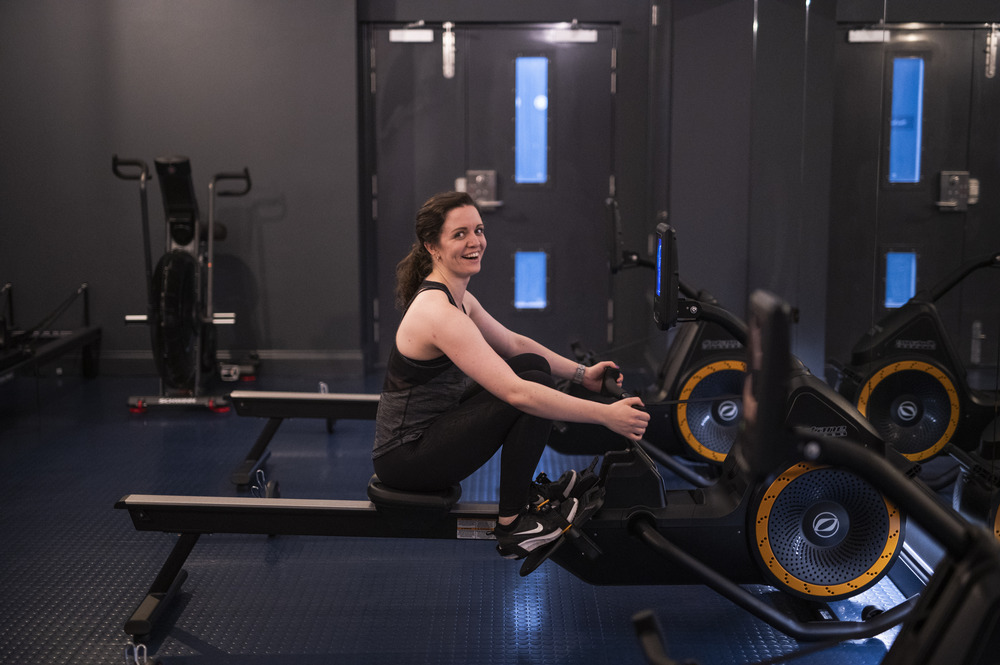
3.2 Lose More Fat & Burn More Calories
Research has illustrated that high-intensity interval training helps to accelerate fat loss.
As previously mentioned, more calories are burned during a HIIT workout in comparison to steady-state cardio, with 25-30% more calories burned than other forms of exercise.
The fat-burning process also does not stop when the workout ends.
As a result of high-intensity training, your body’s resting metabolic rate can improve over time.
Therefore, your body will continue to burn calories even after you have finished your workout.
Tempo HIIT Classes will therefore allow you to burn the same amount of calories as steady-state cardio but in a shorter amount of time.
Pro tip: remember to keep track of your nutrient intake to ensure that your body receives the energy it needs for high-intensity workouts!
3.3 Promote Muscle Gain
Improved changes in muscle mass occur in the specific muscle groups that are used during HIIT workouts.
Weight training is the top choice to increase muscle mass, but research has shown that high-intensity interval training contributes to small amounts of muscle growth.
A study on overweight female teens back in 2017 showed impressive results for those who took part in short HIIT workouts compared to those who completed aerobic workouts, even though the aerobic workout was four times longer than the HIIT workout.
Short, explosive activities (as found in HIIT) demand the body to produce fast-twitch muscle fibres which are much more aggressive than slow-twitch muscle fibres when it comes to muscle growth and strength.
HIIT can therefore be useful in building lean muscle; however, please note that if you are a beginner, the results seen in muscle gain are more probable than those with weight training experience.
Also Read – Cross-Training – How to Fit Pilates & HIIT Into Your Training Regimen
3.4 Promote a Healthy Heart
In 2022, the American Heart Association released a shocking report stating that annually, approximately 805,000 people experience a heart attack.
Tempo 301 believes that you must take the necessary steps to keep healthy in both body and mind, and this includes exercising to boost your cardiovascular fitness and prevent arteries from clogging.
One of the main benefits of HIIT is that you can boost your cardiovascular fitness faster.
HIIT Classes can improve blood pressure and blood sugar, and high-intensity interval training results have proven that one high-intensity interval training session can promote an instant reduction in blood pressure compared to steady-state exercise.
3.5 Improve Stamina
Stamina means adapting to the physical and mental barriers that need to be overcome while exercising.
This ensures that your body can exercise for a longer duration using less effort.
As above, HIIT forces your body to adapt to anaerobic workouts, leading to increased muscle strength and oxygen uptake to take on the challenge.
These two factors ensure that the next workout will not be as strenuous as the previous one, leading to increased body performance the more you train in HIIT conditions.
The stamina benefit of HIIT is discovering how challenging exercises can become easier the harder you work, allowing your body to maintain the pace for longer.
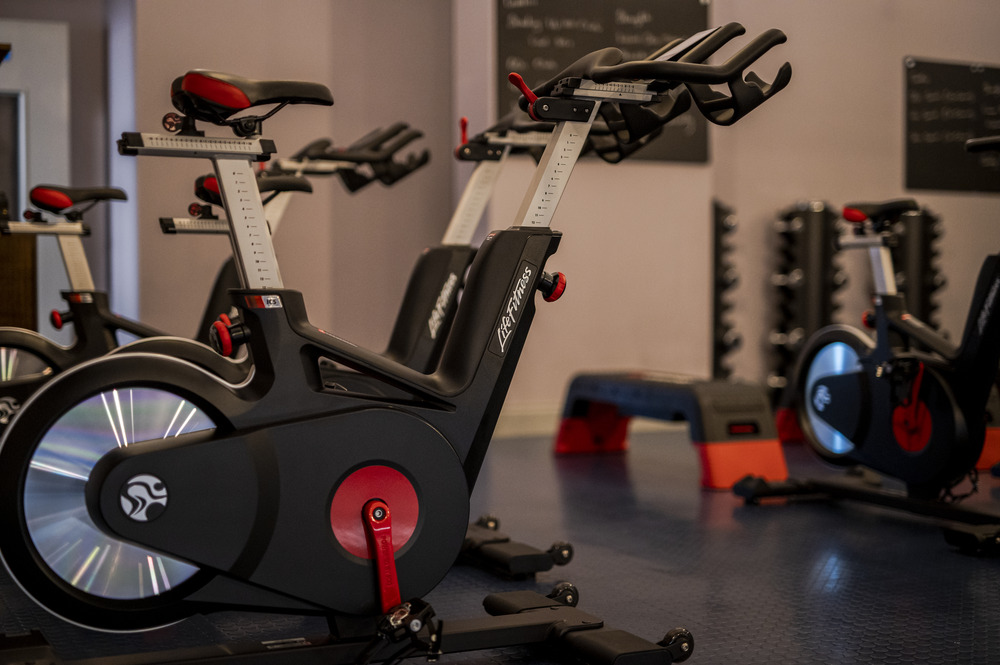
3.6 Increase Strength
It goes without saying – the more you exercise, the stronger your body becomes.
HIIT workouts help to strengthen and maintain muscle capability combined with short rest intervals.
However, to understand how to increase your muscle strength, you need to know what acts as the powerhouse in your body to activate muscle growth.
Mitochondria are the part of the cells in your body that produce the energy necessary for your muscles to function.
HIIT workouts are useful here because this method causes an increase in these cells which in turn leads to an increase in energy supply to the muscles.
High-intensity interval training has been proven to have a positive ripple effect on increased muscle endurance and energy metabolism.
It is, therefore, a very effective form of strength training because it stimulates both hypertrophy (i.e. an increase and growth of muscle cells) and strength gains.
Also Read – Pilates Training Is For Everyone [Go From Beginner to Expert]
3.7 Improve Oxygen Consumption
Traditionally, many athletes have focused on endurance training to strengthen their circulatory system (i.e. the part of your body that transports oxygen-rich blood and nutrients from your lungs to your muscles and tissues throughout your body).
And while steady-state cardio workouts such as long-distance cycling, running and swimming are excellent aerobic workouts for this goal, studies have shown that HIIT is equally as effective in supporting and strengthening the circulatory system.
Improved oxygen consumption occurs within a shorter workout duration.
Research has shown an almost identical effect in oxygen improvement between HIIT and steady-state cardio workouts.
For instance, participants in a study who performed 20-minute HIIT workouts four days per week for five weeks ended up improving their oxygen consumption in a very similar fashion to those who cycled continuously for 40 minutes per day instead, four days per week.
The results were almost identical, but improved oxygen consumption occurred in shorter workouts with high-intensity interval training.
Once again, albeit a challenge, HIIT workouts prove that the same results as steady-state cardio workouts can be achieved in less time.
Work smarter, not longer.
4. Traditional HIIT Exercise Examples
HIIT exercises comprise a variety of aerobic and anaerobic activities.
Before you begin, it is always best to identify your starting fitness level and which HIIT ratio (i.e. the amount of time spent exercising versus the time spent recovering in your rest intervals) you will train.
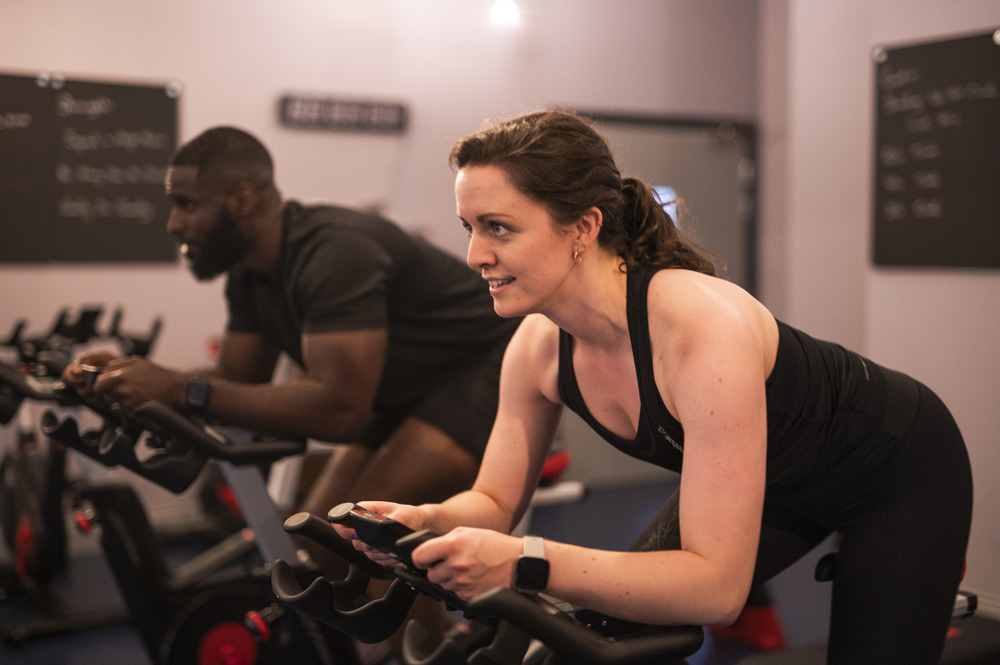
Here are just a few HIIT examples that you can explore:
- Burpees – This is a two-part exercise where your body weight is used for resistance. Beginning in a squat position, burpees involve a push-up, followed by an explosive leap into the air. The main muscles that this exercise targets are the calves, chest, triceps, biceps and glutes.
- High Knees – This is a favourite warm-up exercise amongst athletes before a match or training session. With no equipment required, this exercise will kickstart your heart rate and activate your quadriceps, hamstrings and hip flexors. This exercise also helps to improve flexibility and coordination in these muscles.
- Lunge Jumps – Similar to a walking lunge exercise, a lunge jump is purely a step up or a more explosive version. Once your legs are shoulder width apart, place one foot forward into the lunge position and jump into the air while simultaneously alternating your legs and placing the other leg forward to repeat the exercise. This is an excellent exercise to boost your heart rate and burn calories.
- Jumping Jacks – This is another fantastic cardiovascular exercise that focuses on improving muscular strength and endurance. This complete-body exercise activates every muscle in your body. As you jump, you must move your feet laterally while your hands move up and down above your head and back to your side.
- Mountain Climbers – This compound exercise strengthens your upper body, core and legs effectively. Begin in a plank position with your hands slightly wider than your shoulder width. The key here is to alternate bringing in your knees as swiftly as possible and moving them back to the starting position. Mountain climbing is an excellent exercise to increase agility.
- Rope Jumping – For this exercise, you will need a decent length of rope that can comfortably move over your head. Your feet must be close together, and your elbows must be tucked in while you gain momentum and swing the rope over your head. Jump over as it moves towards your feet, and reap the benefits of tightening your abdominal muscles and reducing fat.
- Push-ups – This is a popular exercise that needs no introduction. Although the level of technique and difficulty may be tricky for beginners, push-ups are ideal for a stronger and more toned upper body. Mastering the technique will help to prevent any unnecessary strain on other muscles in your body; just be sure to focus on a straight spine, and keep your legs straight when you push your upper body up from the ground with your palms flat.
- Side Jackknife – When done correctly, a side jackknife will activate your obliques, shoulders and quads. The correct body alignment will ensure that your hip flexors work during this exercise. Lie down on your side with one leg on top of the other. One arm should be behind your head and the other on the floor to keep balance. Contracting your obliques is necessary for an effective workout.
- Russian Twist – This is another great exercise for the core that athletes tend to favour due to the benefits of improved rotational movement needed in several sports. Sit on the floor in a v-position, keeping your legs shoulder-width apart. Starting in a neutral position, twist your upper body from one side to the other several times, or raise the bar with the help of a medicine ball that can be held in your hands when you execute the twists.
- Kettlebell Swings – This low-impact exercise will require the use of a kettlebell (ranging from 8 kg to 32 kg). With the correct technique, this exercise will improve muscle strength in your traps, rhomboids, calves, glutes and hamstrings to give you greater power. Kettlebell swings are also a quick and convenient way to burn calories.
5. Tempo HIIT Classes vs Traditional HIIT Classes
Tempo HIIT Classes will physically challenge you to focus on and improve your entire body strength with our meticulously planned workout program.
The exercise program focuses on the correct ratio of short bursts of high-intensity cardio combined with rest intervals while being low-impact and sustainable for your body in the long term.
Our classes are structured and planned with cardio and strength work integrated into one session.
Each participant can be sure to expect an effective and efficient full-body workout, and each session will leave you feeling energised and excited for the next opportunity to release sweat and endorphins while burning unwanted calories.
At Tempo 301, a personal training level of detail in a group class setting is guaranteed for every session and we aim to provide each person who enters our studio with the tools to grow in confidence with their form while enjoying the group energy to help motivate them.
With low-impact movements from start to finish, Tempo HIIT is perfect for anyone who is recovering from an injury.
Our skilful trainers are seasoned to provide you with the adjustments required to adapt your movements accordingly to your current physical state, and Tempo HIIT will ensure that you experience support through each controlled movement.
Our low-impact cycling and rowing cardio elements will also improve your heart health.
With the avoidance of impact cardio work, you will feel an improvement in cardiovascular fitness while avoiding any aggravation in your joints.
You are in control of how challenging you want your workout to be.
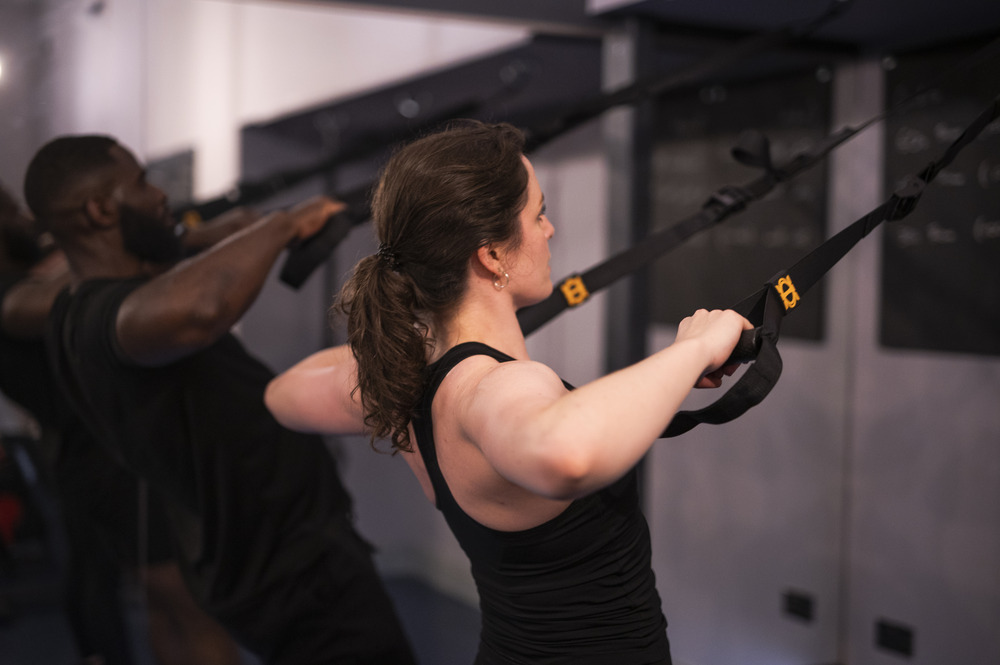
Whether on form or experiencing an ‘off’ day, we offer optional regressions/progressions to adjust the difficulty how you see fit.
Tempo HIIT identifies your fitness level and considers your state of energy level before the start of your HIIT workout.
Each Tempo HIIT participant can be sure to see results from 2-3 sessions a week, and we will help you to track your progress and ensure that you enjoy a new endorphin fix.
High-intensity interval training intersperses short periods of intense exercise, combined with rest intervals for recovery.
This form of physical training is ideal for any person seeking to reach their physical goals within a limited time frame to exercise.
Tempo HIIT will help you to raise your heart rate, improve blood flow to your muscles, and burn more calories.
Our HIIT workout is adjusted to your specific needs and fitness levels.
For more information, please feel free to contact us or visit one of our studios:
LONDON SE17 | Elephant Park
Call/Text: 07881 746 243
LONDON E8 | Hackney
Call/Text 07563 578 165
LONDON E1 | Shoreditch
Call/Text 07798 586 925
